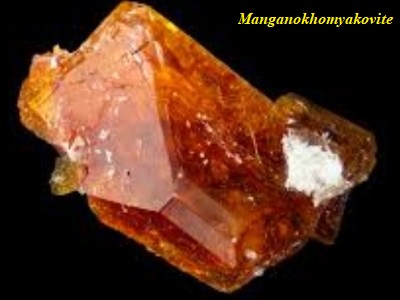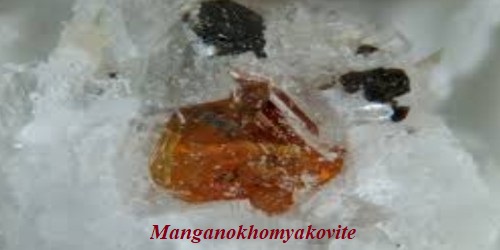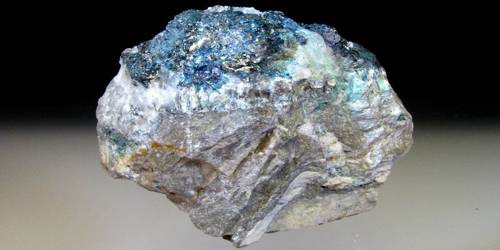Manganokhomyakovite is a very rare mineral of the eudialyte group, with formula Na12Sr3Ca6Mn3Zr3WSi(Si9O27)2(Si3O9)2O(O, OH, H2O)3(OH, Cl)2. It is a trigonal-ditrigonal pyramidal mineral containing calcium, chlorine, hydrogen, manganese, oxygen, silicon, sodium, strontium, tungsten, and zirconium. This formula is in extended form (based on the original one), to show the presence of cyclic silicate groups and domination of silicon at the M4 site, basing on the nomenclature of the eudialyte group. Some niobium substitutes for tungsten in khomyakovite.
General Information
- Category: Cyclosilicates
- Formula: Na12Sr3Ca6Mn3Zr3WSi(Si9O27)2(Si3O9)2O(O,OH,H2O)3(OH,Cl)2
- Crystal system: Trigonal
- Crystal class: Ditrigonal pyramidal (3m) (same H-M symbol)

Properties
As suggested by its name, manganokhomyakovite is a manganese-analogue of khomyakovite, the latter being rarer. The two minerals are the only group representatives, besides taseqite, with species-defining strontium, although many other members display strontium diadochi. Manganokhomyakovite is the third eudialyte-group mineral with essential tungsten.
- Color: Orange to orange-red
- Crystal habit: pseudo-octahedra
- Fracture: Uneven
- Tenacity: Brittle
- Mohs scale hardness: 5-6
- Luster: Vitreous
- Streak: White
- Diaphaneity: Transparent to translucent
- Density: 3.13 (measured), 3.17 (calculated)
Occurrence and association
Manganokhomyakovite, khomyakovite, johnsenite-(Ce) and oneillite are four eudialyte-group minerals discovered in alkaline rocks of Mont Saint-Hilaire, Quebec, Canada. Association of manganokhomyakovite is rich and includes aegirine, albite, analcime, annite, kupletskite, microcline, natrolite, sodalite, titanite, wöhlerite, zircon, cerussite, Galena, molybdenite, pyrite, pyrrhotite, and sphalerite.
Information Source:
















